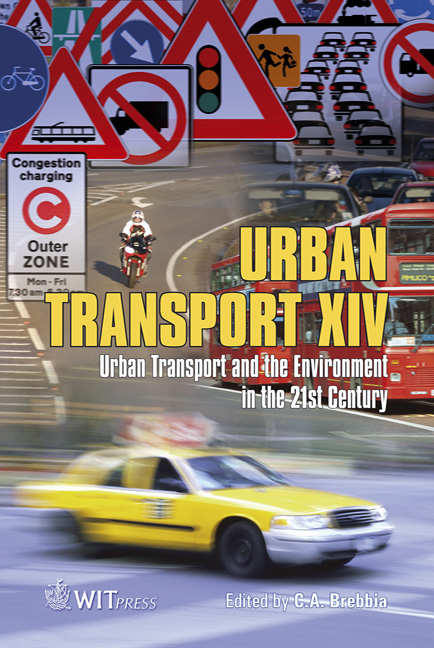Sustainable Mobility In The City Of Larissa
Price
Free (open access)
Transaction
Volume
101
Pages
6
Page Range
285 - 290
Published
2008
Size
231 kb
Paper DOI
10.2495/UT080281
Copyright
WIT Press
Author(s)
S. Gerasimou
Abstract
According to Aristotle, the most beautiful city is the one that reaches harmony, which is the equilibrium between its population and size. This is a prerequisite for producing beauty within the city. Nowadays, the aforementioned proposal could be interpreted as a wide goal comprising contemporary principles aiming at preserving the quality of life, such as the protection of the environment, sustainability, sustainable development and sustainable mobility. In this context, the paper examines sustainable mobility in Larissa, one of the major Greek cities in Thessaly. Larissa is a dynamic industrial, agricultural and cultural centre in the mainland of Greece with around 200.000 inhabitants. The first attempt to rationalize urban planning according to contemporary principles dates back to the seventies. Since that period the city has known a high development rate, while a series of plans and studies have been elaborated and implemented aiming at sustainable development, urban renaissance and sustainable mobility in the city centre. Thus, Larissa disposes of a wide pedestrian network as well as a less extended bike network. The above infrastructure connects the administrative centre to the traditional / old part of the city and finally to the river shores zone. The works in question have improved the quality of life and have had a direct positive impact on the physiognomy of the city. Therefore, the city could be considered as an interesting model case implementing sustainable mobility in Greece. The paper presents the evolution and implementation of sustainable mobility in Larissa, showing off the institutional framework and taking into account the encountered difficulties. Finally, it concludes with proposals and perspectives of sustainable mobility and urban transport policy for the city in question, which could reveal a particular interest for towns of similar scale in the wider European area. Keywords: urban transport, sustainable mobility, sustainable development, walk ability.
Keywords
urban transport, sustainable mobility, sustainable development, walkability.





